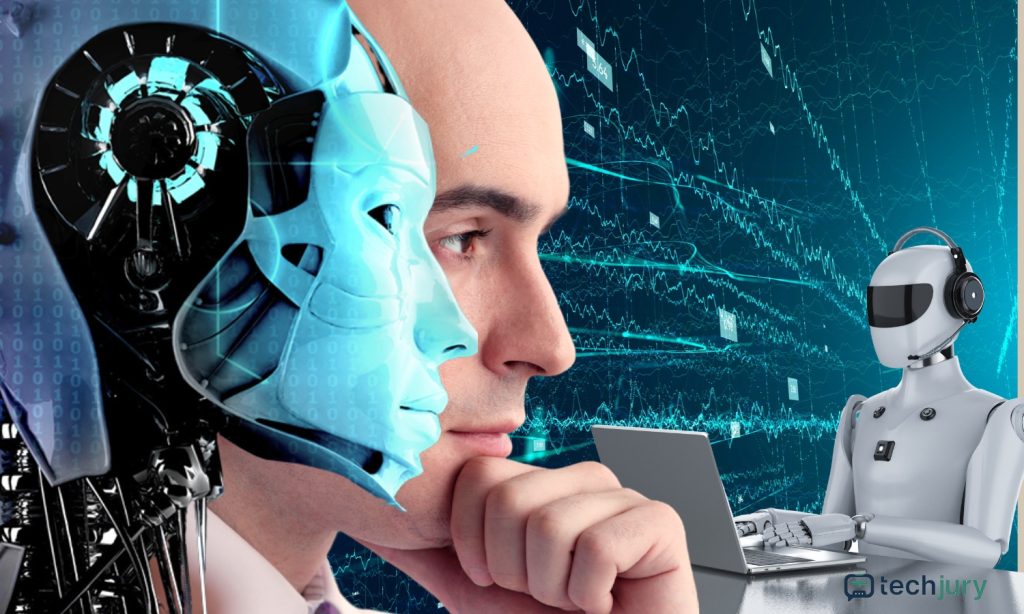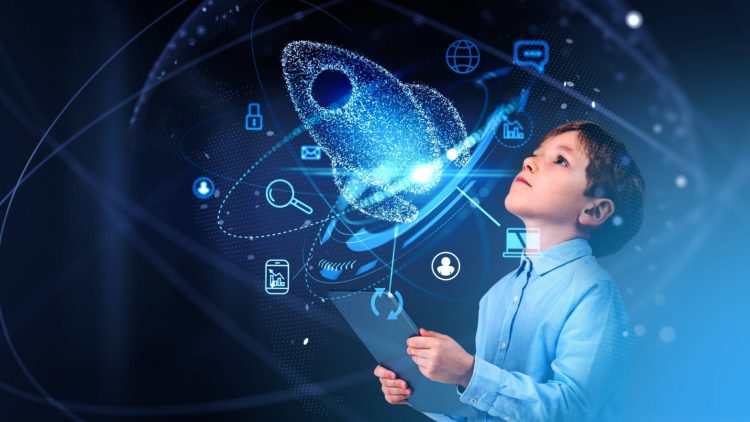Introduction: Humanity’s Enduring Quest to Augment Itself
For as long as humans have existed, we have sought to extend the reach of our minds and bodies. The earliest stone tools were attempts to amplify our hands; the first cave paintings were attempts to extend our memory. Each great technological leap since then—from the steam engine to the silicon microchip—has transformed not only the tools we use but also the very structure of societies, economies, and our self-understanding as a species. Today, as we stand at the threshold of artificial intelligence capable of near-human reasoning and of brain–computer interfaces that blur the boundary between biology and machine, it becomes imperative to understand how we arrived at this point.
This essay follows a historical arc of technological development: from the mechanical power of steam to the computational revolutions driven by silicon, and onward to the potential “singularity” where machines may surpass human intelligence. By studying this trajectory, we can gain insights into the social, economic, and ethical questions that will shape our collective future.
Chapter I: The Mechanical Age – Power from Steam
The Industrial Revolution, beginning in the late 18th century, marked the first large-scale transformation of human societies through technology. The steam engine, popularized by James Watt, turned the latent energy of coal into a reliable source of mechanical power. This innovation liberated production from the limits of human and animal muscle.
Factories sprang up across Britain and soon across Europe and North America. With them came new urban centers, a new industrial working class, and unprecedented productivity. Railways stitched continents together; steamships transformed global trade.
But this age was not merely about machines. It reshaped social hierarchies, labor relations, and even political ideologies. The displacement of agricultural laborers, the rise of wage work, and the first waves of urbanization triggered movements for labor rights and new economic theories. Technology thus became inseparable from questions of justice, equity, and governance.
The lessons of this period are clear: transformative technology cannot be viewed in isolation from its social consequences. Each mechanical innovation set off a chain of economic, cultural, and political reactions—many unforeseen by the inventors themselves.
Chapter II: The Electrical and Industrial Age – Harnessing Energy and Communication
By the mid-19th century, the world began to harness electricity, the invisible force that would electrify industry, transportation, and communication. Telegraphs and telephones collapsed distances that had constrained commerce and diplomacy for millennia. Electric light extended human activity beyond daylight hours, transforming urban life.
Electric motors replaced steam engines in factories, allowing for more flexible layouts and higher productivity. Meanwhile, the internal combustion engine and the mass production of automobiles revolutionized both industry and daily life.
Electricity also facilitated new forms of scientific investigation. Medical imaging, chemical analysis, and other techniques accelerated scientific progress, establishing a virtuous cycle between technology and discovery.
The social consequences were equally profound. Communication technologies like the radio and later television created mass culture, enabling the rise of modern political propaganda as well as mass entertainment. Energy abundance fueled global population growth but also deepened the environmental footprint of industrial society. The electrical age demonstrates that technology is never merely technical—it is ecological, cultural, and political.
Chapter III: The Digital Age – From Silicon to Networks
The next great leap came with the discovery of the transistor in 1947 and the subsequent invention of the microprocessor in 1971. For the first time in history, humanity could manipulate information at near-lightning speed, store it cheaply, and distribute it across vast distances. This digital revolution transformed almost every sphere of life.
Personal computers in the 1980s democratized computing power. The internet in the 1990s and the rise of smartphones in the 2000s connected billions of people into a single global network. E-commerce, social media, telemedicine, and digital education redefined commerce, communication, and even relationships.
Unlike the steam and electrical revolutions, the digital revolution has been defined by intangible goods—data, algorithms, software. The power of information processing allowed not only faster calculation but also the automation of decision-making itself.
Yet this transformation has not been without tension. While the digital economy generated immense wealth, it also concentrated power in a handful of corporations and created new divides between the digitally connected and the excluded. Privacy, surveillance, cybersecurity, and disinformation have emerged as critical societal challenges. Once again, the technology that promised emancipation also raised profound ethical dilemmas.

Chapter IV: The Data and AI Era – Machines that Learn
We now inhabit an age defined by data abundance and machine learning. Artificial intelligence systems can recognize speech, translate languages, generate images, and even assist in scientific discovery. Cloud computing and advanced chips have made it possible to train massive neural networks that rival human capabilities in narrow domains.
This is not just a continuation of the digital revolution; it marks a new stage. While early computers were deterministic calculators, today’s AI systems exhibit adaptive, probabilistic, and sometimes opaque behavior. Their power lies in their ability to extract patterns from vast data sets and to act upon those patterns autonomously.
AI has brought breakthroughs in healthcare (early disease detection), climate modeling (better predictions), agriculture (smart irrigation), and many other fields. At the same time, it has introduced new threats: algorithmic bias, job displacement, autonomous weapons, and the risk of human oversight eroding in critical decisions.
The current debate about AI alignment and safety underscores the historical lesson: transformative technology demands equally transformative governance.
Chapter V: The Imaginative Future – Quantum, NeuroTech, and Space
As we look forward, several emerging technologies hold the potential to redefine what it means to be human and to live on this planet.
- Quantum Computing promises to revolutionize fields that rely on complex optimization and cryptography.
- Brain–Computer Interfaces could blur the line between biological and artificial cognition.
- Synthetic Biology offers the ability to redesign organisms for medicine, agriculture, and energy.
- Space Technologies—from reusable rockets to asteroid mining—may expand humanity’s economic sphere beyond Earth.
These frontiers evoke both hope and unease. If history is any guide, these technologies will not evolve in a vacuum. They will interact with social institutions, economic incentives, and geopolitical rivalries. The trajectory they follow will be shaped as much by policy and culture as by engineering prowess.
Thematic Reflections: Lessons from History for the Future
Looking back across these eras reveals recurring patterns:
- Acceleration: Each new technological leap arrives faster than the previous one.
- Integration: Technologies reshape not just industries but also governance, culture, and individual identity.
- Inequality: The benefits of innovation are often unevenly distributed, triggering social tensions.
- Unintended Consequences: Innovations solve some problems while creating new ones.
- Need for Foresight: Without proactive governance, technological revolutions often deepen crises before they resolve them.
Understanding these patterns allows us to better anticipate the challenges and opportunities posed by emerging technologies.
Epilogue: Toward a New Renaissance or a New Crisis?
We now stand at a critical juncture. The transition from steam to silicon taught us that technological revolutions are double-edged—capable of liberation and oppression, prosperity and devastation. The possibility of approaching a technological singularity, where machine intelligence surpasses human comprehension, raises unprecedented philosophical and practical questions: Who will control these systems? How will humanity define progress? Will we build a new Renaissance of creativity and flourishing, or stumble into crises of inequality, surveillance, and ecological collapse?
The answers will not be determined by algorithms alone. They will depend on collective choices: how we educate the next generation, how we regulate innovation, and how we distribute its fruits. As we look toward the future, the historical arc of technology reminds us that human agency remains central.
The story of progress is, at its core, the story of how humanity learns to wield its tools wisely. If we can pair ingenuity with wisdom, the next leap—from silicon to perhaps singularity—may indeed mark the beginning of a more just, sustainable, and enlightened age.
















































